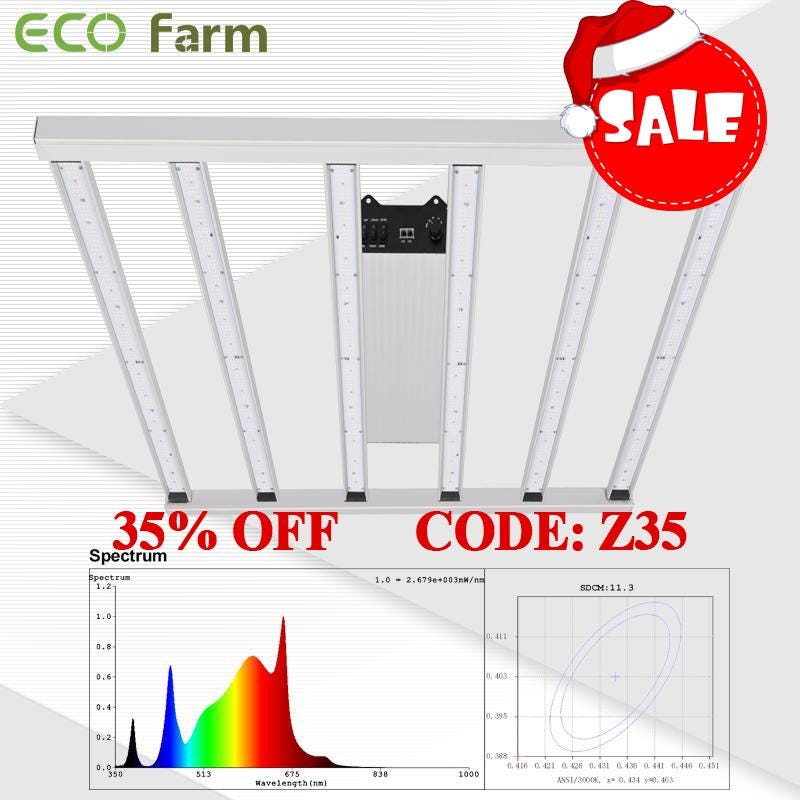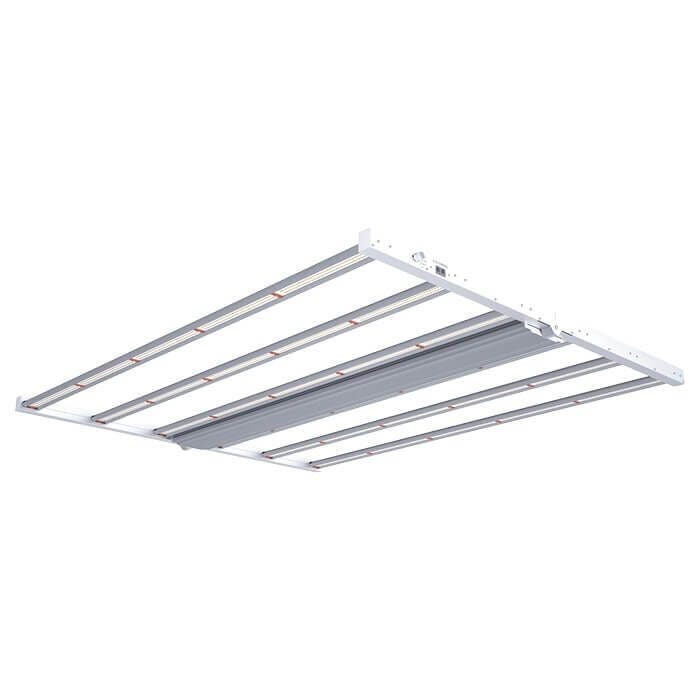If you have houseplants, you should pay attention to the amount of light they get. In this article, we’ll look at a variety of grow lights for houseplants to help your houseplants grow quickly and healthily. We also have a buyer’s guide to help you make the right considerations in terms of brightness, price, and more when buying, read on!
How many LED grow lights do I need?
Getting the right amount of LED lights is something you want to get right the first time, or you could end up wasting money and time.
There is a way to determine how many LED grow lights you will need — there are two steps. You need to determine the plant’s lighting needs and your plant area’s dimensions. The plant’s needs are measured by watts per square foot.
Do not measure the plant area (your grow tent or wherever else you’re growing your plant) but instead measure the footprint or your plant’s canopy.
Example: A 5 feet by 5 feet space with a plant canopy of 4 feet by 4 feet needs only LED lighting for the 4 feet by 4 feet area.
To calculate the wattage needs of your plant, you will need to do some research about your plants. It is not always a case of more is better. In fact, too much LED light can burn plants and even bleach them.
This sounds complicated, but once you’ve done it a few times, you’ll get the hang of it. Alternatively, you can just search the internet for this specific information about your plant.
ECO Farm Z6–600 Samsung LM301B LED Grow Light

Features:
This ECO Farm LED grow light uses a high-quality and durable driver and top trash can LED generation and 6 passive cooling light bars to provide full spectrum and wide coverage light for vegetable and flowering growth stages. It covers 5’x5′ Veg footprint and 4’x4′ flower footprint. The high energy efficiency of 2.7umol/J produces a total PPF output of 1501 umol/J, which produces uniform light spread very close to the crop canopy, and provides excellent effects for indoor planting, greenhouses and planting tents. Compared with conventional similar wattage HPS solutions, LED lights can achieve 30–40% HVAC capacity and up to 30–60% increase in output. IP65 wet environment protection grade, waterproof and dustproof. The LED plant growth lamp adopts high-quality aluminum heat sink design to efficiently dissipate heat. It has no additional fans, and the quiet planting environment has zero noise.
Street Light 680w LED Grow Light

Features:
Designed to deliver an astonishing 2.7µmol/J and 1750µmol/s PPF, Street Light LED grow light uses premium Osram and Samsung LED chips to deliver powerful full-spectrum light across six LED strips. Designed for use from the vegetative plant stage to the harvest stage, the Street Light SL-680 offers growers great convenience with an easy-to-use plug-and-play setup that eliminates the need to switch lighting or move plants mid-growing. With a single LED covering the full spectrum 3000K 5000K 660nm 760nm IR, our grow lights are perfect for all growth stages. In addition, it works and supports all growth stages such as bloom and tall growth. This grow light has a dimming knob that powers the unit via an ON/OFF switch and dims it from 0–100. This customization makes LED strip lights ideal for different plant stages and growing environments.
BUYER’S GUIDE
You may want to know a little more about the best LED grow lights before you invest in them, and that’s understandable. There are several important things to remember about LED grow lights, and we’ll discuss them here.
Type of Lights (Spectrum) and Light Color
The color spectrum is one of the most important factors to consider when buying a set of LED lights. If you fail to get the best and full spectrum of color for your plants, they will not grow very well.
Making a smart choice is very important.
It is important that you know what a color spectrum is first. It is the graphical display of all of the colors in sunlight. Wavelength numbers are used to refer to colors instead of names, which many feel is more accurate. For example, a red color may have a wavelength of 630 or 660. Although it looks the same to us, these two reds are different colors.
Plants use light for the process of photosynthesis. Blue and red light are absorbed more for this purpose, and very few green colors are absorbed.
Red lights are important for plant stem growth and leaf expansion. They also regulate flowering, seed germination, and dormant periods.
Far-red light also supports the lower leaves and reduces the time it takes for plants to grow ad flower. It has been found that plants exposed to this light grow bigger leaves.
Blue lights may cause the plants to grow unhealthily if not used correctly, and overexposure happens. This wavelength affects the chlorophyll content in plants and the thickness of leaves.
Greenlight acts as a support for leaves that are located lower.
Ultimately, the best color for your plants depends on the type of plants you have. In most cases, plants do best with lights from all wavelengths but don’t need equal amounts from all of them. You should do more research influenced by the kind of plants you want to grow.
Keep in mind that cheap LED grow lights may only have blue and red bulbs.
Illumination Area
In general, this will depend on the LED lights you have purchased. You should be able to tell on the packaging what their best illumination area is.
Modes
It is recommended that you invest in LED lights that are dimmable. This will ensure that you can adjust the light according to the plant’s needs. A good mode to have with LED lights is the view mode. This allows you to switch to white light for a more natural view of your plant.
Design and Construction
LED grow lights make use of LED chips to produce the kind of light that plants need to grow. You can find them in many sizes and shapes.
Manufacturers use technology to make sure that the diodes they use in their products will emit the highest-quality and correct wavelengths. This will give users the best results.
Cheaper manufacturers will obviously not be able to deliver such good quality LED grow lights. The intensity of cheaper LED grow light will also decline over time, so be sure that you buy a higher quality LED product rather than a cheap one.
Safety Features
Even the best LED grow lights do not work the same way as normal lights, which emit a lot of heat. This means that these guys will not get hot enough to start a fire. That makes them much safer than their counterparts.
Conclusion
Indoor plants are delicate and need extra care from us. Grow lights are essential to provide sufficient light to let the plants enjoy healthy growth, and all its processes, namely photosynthesis, and flowering may go on hassle-free.
LEDs or fluorescent light covering the ideal spectrum range with a perfect intensity are good to go as grow lights. While using grow lights, maintain a particular gap between the lights and the houseplant so that the heat doesn’t affect the plant.
Don’t forget to put the lights off at night because plants need rest like us. Even if you forget to do so, there is a way to save your plant. Look for yellow leaves in the plants. If there are any, make sure your plant is not experiencing a lack of nitrogen. If not, change the light and remove the damaged leaves
